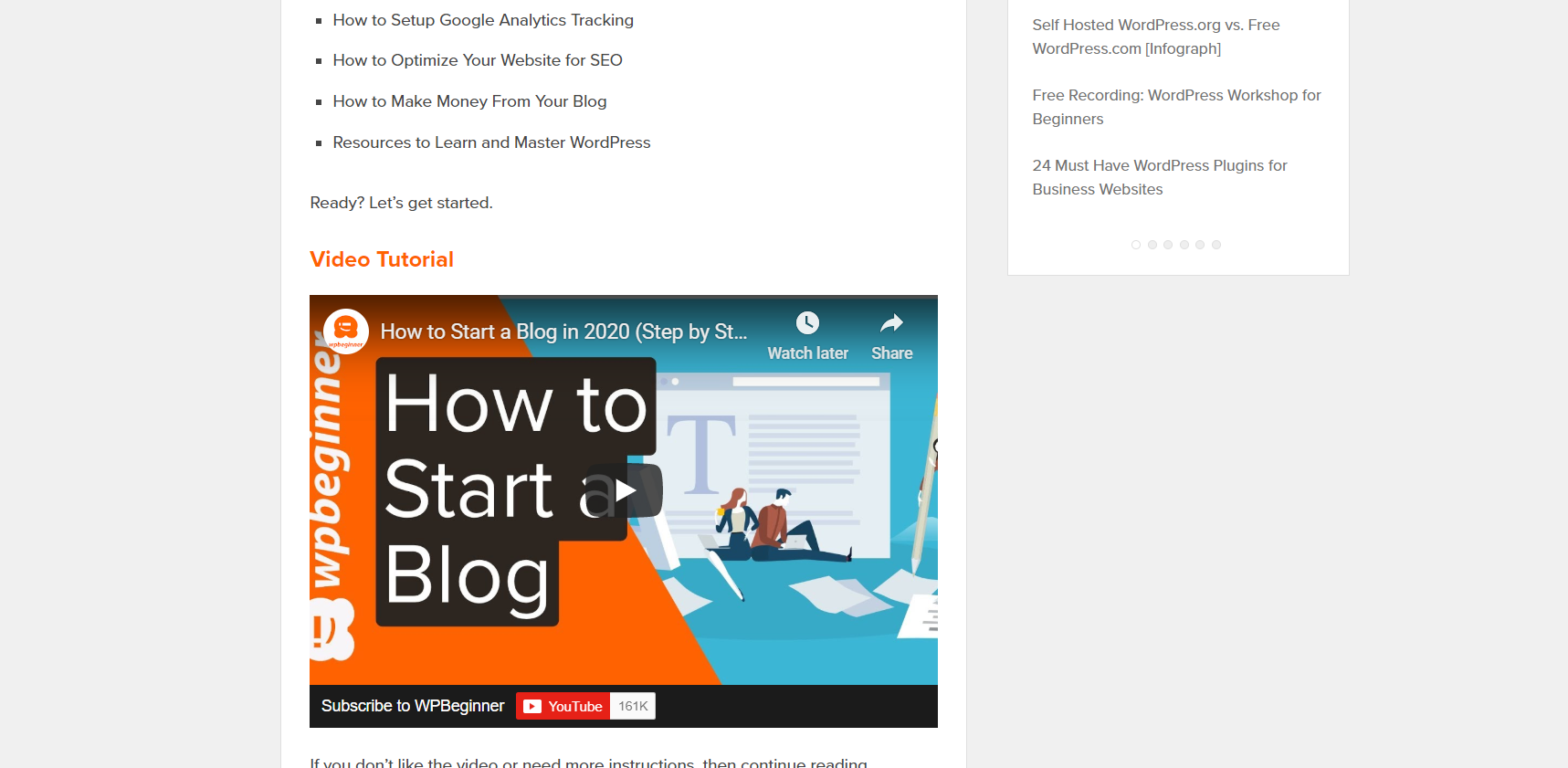Video content and its consumption are growing every day. There are billions of searches done online daily, of which, many of them are for videos. Adding video to your content marketing strategy will help you get more traffic and boost conversions.
There are several video marketing statistics that showcase why videos can help your business.
- 44% of people seeking products and services watch videos
- Of them, 53% of the viewers contacted the business and 51% visited the company site
- People are 2.6x as likely to stay on a webpage is it has video content
It’s evident that videos can impact your online business in a positive way. Which is why you need to make it searchable i.e. indexed by search engines. It’s vital to ensure that search engines pull up your videos for relevant searches. To that end, here are some best practices you should follow to boost video searchability.
Use the Appropriate Tag
In order to index your video, Google needs to find your video with the help of the appropriate HTML tag such as <video>, <object>, and <embed>.
It’s good SEO practice to use the appropriate HTML markup to enable search engines to crawl your site appropriately. It’s a simple but important way to make your videos more searchable.
Create a Video Sitemap
A video sitemap is a sitemap that gives search engines additional video data. It provides search engines with helpful metadata that can be used to improve search results. This data includes the title, running time, description and more. Creating a video sitemap gives clarity and provides more context and meaning to a search engine. Ensure that your website has one to boost your video SEO.
Make the Video Public
If your video is only available by logging into a membership site or any other type of gateway, your video won’t be indexed. You have to make sure that your video is publicly available so that search engines can crawl it. Gated video content creates value and customers will be willing to pay to access helpful content.
However, your gated videos will not appear in search results. You can create separate publicly visible pages with useful previews, sample videos, and limited information to drive traffic to your site and improve searchability.
Your video may also be blocked from indexing if the robots.txt rules are not set appropriately. Make sure that you correct these issues to make your videos appear as search results for relevant keywords.
Keep Context Relevant
A video needs to make sense in the context of the page it’s in. If you’re writing an article about creating a new blog then your video should not be about troubleshooting payment problems.
Even though these topics can be linked, it’s important for the video and the entire content of the website to be cohesive. Cohesiveness matters because search engines generate meaning from the video and the page itself when crawling for information. Creating disparate videos and articles can harm your video’s searchability.

A video needs to fit the context of a page
Avoid making video indexing mistakes
If you want to get your videos listed and searched you need to avoid common mistakes businesses make when publishing video content. Here are some mistakes that you should know about that can keep your videos from appearing search results.
Blocking Indexing with robots.txt
A key but easy-to-forget step is to ensure that the robots.txt rule for your video page is not set to no-follow. It’s also important to ensure that search engines have access to important information. Here are some of the data a search engine needs:
- The thumbnail specified in the structured data or sitemap
- Access to the page the video is on
- JavaScript or other resources needed to load the video.
- The video sitemap
- Access to the video itself i.e. the source file
You need to make sure that your robots.txt rules do not block these resources. It seems like common sense but this mistake happens more often than you may realize. Without access to these data, your video will not be indexed.
Using Low-Quality Thumbnails
When publishing your video, you need to ensure that you use high-quality thumbnail images. Low-resolutions will impact your searchability negatively. Use images that are at least 160×90 pixels in size.
Creating the Same Thumbnails for a Content Series
If you create a content series in which every video is a follow up to the prior one, you have to ensure that you create a different thumbnail for each video. Using the same thumbnail and other information for all an entire video series makes the content indistinguishable to people and search engines.
Use unique and distinct thumbnails, descriptions, and titles. This makes it easier for users to understand the content and it will affect video indexing in a positive way.
Making your Videos Hard to Find
Some websites don’t make it easy to navigate to their video pages. It’s helpful to create individual and separate pages for each video with unique titles and descriptions.
Your titles need to inform the search engine and your users what it’s about. Make your videos appear prominently on the page so that users find it immediately when they visit your site.
Make Your Videos Searchable to Grow Your Site
Adding video content is important as it is highly engaging and you can leverage it in many ways to grow your business. Today, there are billions of unique mobile phones users. They have access to the internet and carry out a significant portion of their online activities on the phone.
Videos are easier to consume on small screens and it’s a helpful alternative to reading long text posts. It’s important to use video marketing in order to reach out to a larger audience and win more customers.
You can help people find your videos by improving its searchability. Use the tips mentioned here, and you’ll help boost your business growth.
Digital & Social Articles on Business 2 Community
(58)









